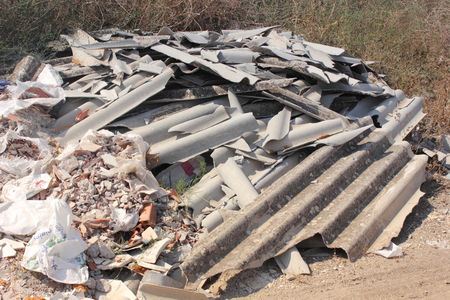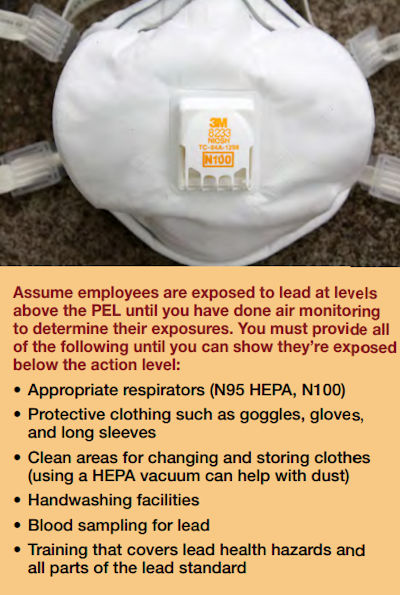06.C Lead and Asbestos Hazard Control.
06.C.01 General.
- No asbestos-containing materials (ACMs) must be used or brought onto any USACE projects. Lead-based paints (LBP) must only be used with written approval of the GDA or USACE SOHO and must never be used inside a residence, child care facility, or medical treatment facility.
- All construction or maintenance projects will be evaluated for the potential to contact ACM and LBP.
- (1) Lead and asbestos sources are to be labeled as a lead or asbestos hazard that should not be disturbed without proper protection. If infeasible to label each source, a site map may be posted which points out the location of the lead and asbestos hazards.
- (2) If the evaluation shows the potential for activities to generate unacceptable occupational exposure to LBP, a written lead compliance plan must be written. The lead compliance plan must be in accordance with 29 CFR 1910.1025 and 29 CFR 1926.62.
- (3) If the evaluation shows the potential for activities to disturb ACM, an asbestos abatement plan must be developed. The plan must be in accordance with 29 CFR 1910.1001; 29 CFR 1926.1101; and 40 CFR 61, Subpart M.
- (4) These plan(s) must be developed as an appendix to the APP or, for USACE operations, the Project SOH Plan. The written plan(s) must be submitted for acceptance by the GDA or local SOHO before beginning work.
06.C.02 Lead Compliance Plan.
A lead compliance plan must describe the procedures to be followed to protect employees from lead hazards while performing lead hazard control activities. The Plan must address the following:
- A description of each work activity in which lead is emitted, to include equipment and materials used, controls in place, crew size, job responsibilities, operating procedures, and maintenance practices, work activity locations and lead-containing components keyed to the project drawings;
- Description of means to be used to achieve exposure compliance, including any engineering controls;
- Employee exposure assessment procedures to monitor and document employee lead exposure. Exposure monitoring must include two types:
- (1) Initial determination (may be omitted if there is sufficient objective/historical data showing action level compliance according to the requirements); and
- (2) Continued exposure monitoring required as a result of initial exposure determinations.
- Protective clothing, housekeeping procedures to prevent spread of lead contamination both in and beyond the lead hazard control area, and hygiene facilities and practices to prevent employees from inadvertent ingestion of lead;
- Administrative controls to limit employee exposure to lead, including employee rotation schedule to be employed, if engineering controls or PPE fail to eliminate exposures exceeding the PEL;
- Medical surveillance procedures to monitor employee exposures and ensure fitness for wearing respiratory protection;
- Competent person (CP) and employee training required;
- Detailed sketches identifying lead hazard control areas, including decontamination areas and facilities, critical barriers, and physical and air distribution boundaries;
- Perimeter or other area air monitoring outside or adjacent to the regulated area;
- Security required for each lead hazard control area; and
- Waste generation, characterization, transportation, and disposal (including recordkeeping).
Knowledge Check Choose the best answer for the question.
6-6. No _____-containing materials (ACMs) must be used or brought onto any USACE projects.
You forgot to answer the question!


